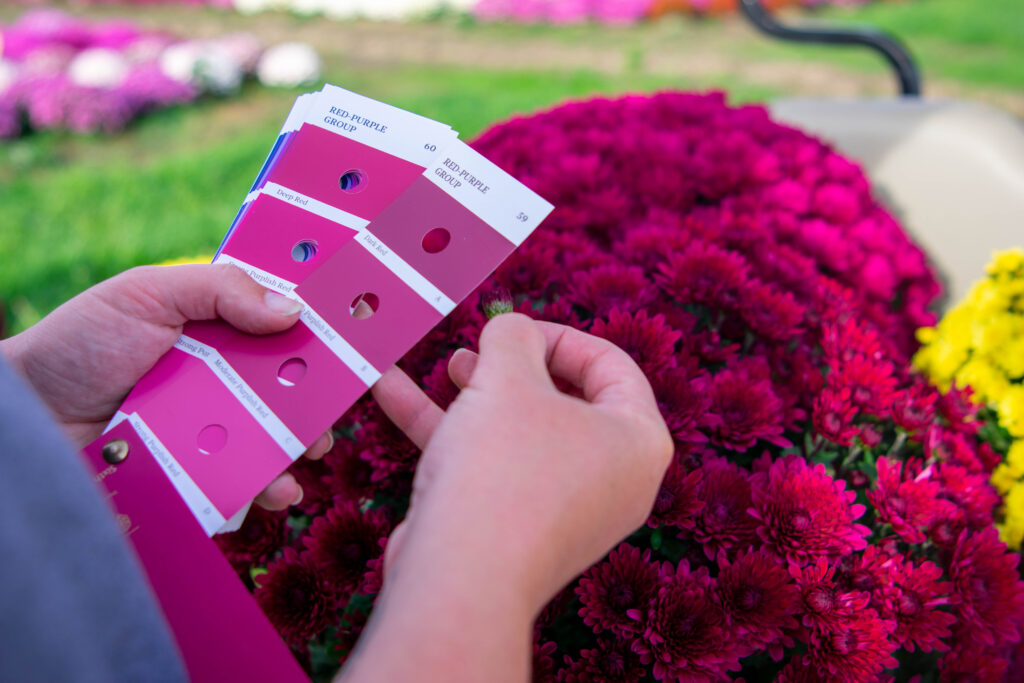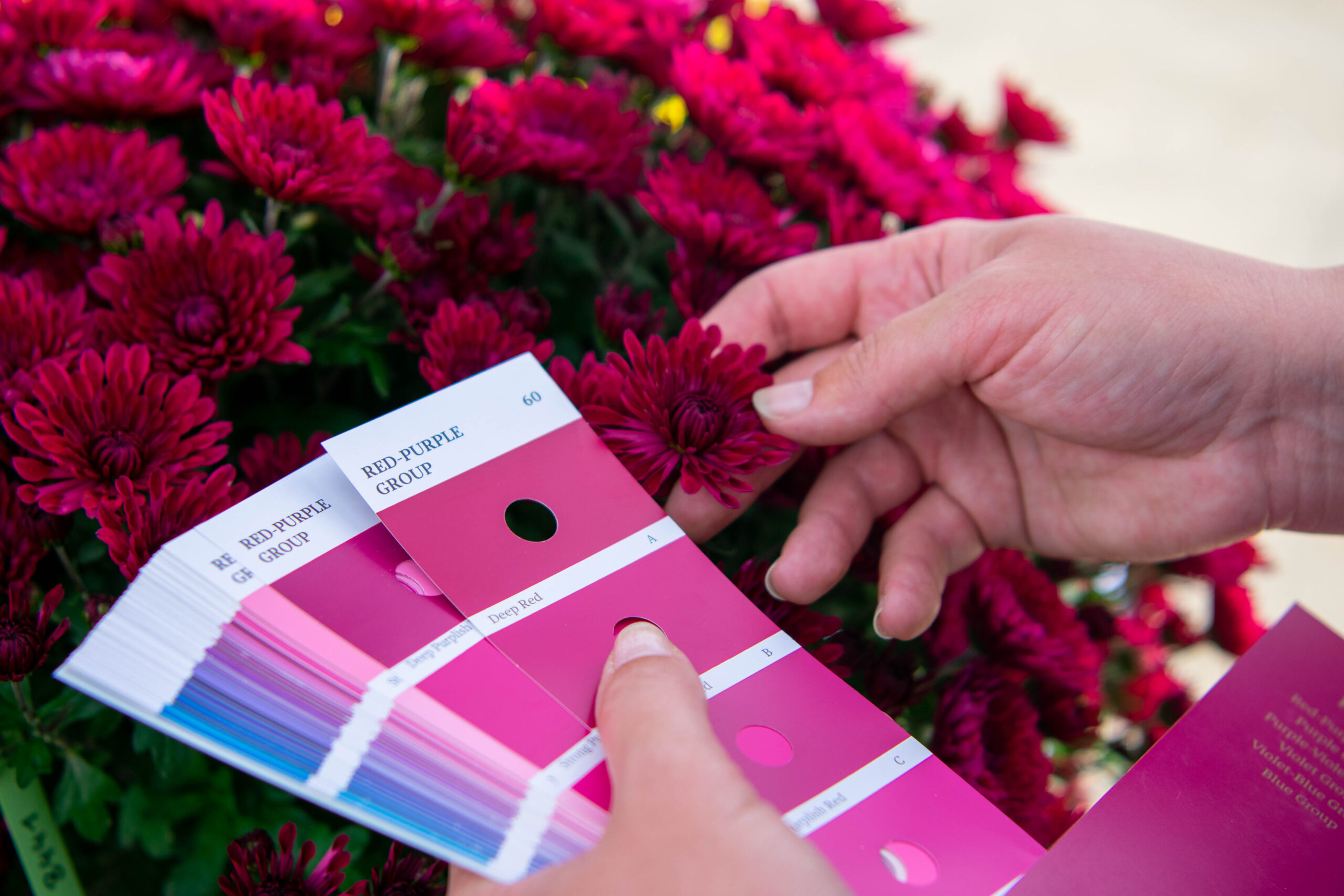Colour measurements and plant breeders’ rights
05 Apr 2023‘Piracy is a crime!’ It was written on the red stamp that appeared on the screen while a menacing voice uttered the message once again clearly and a tad ominously at the start of each videocassette or DVD. Video cassettes and DVDs are barely mentioned today but piracy remains a focus and a concern. Also in the case of chrysanthemums.
Chrysanthemum varieties do not come into being by themselves. They are the result of a long, technical, creative and intellectual process. The energy, time and resources that go into them are protected internationally by breeders’ rights and patents. These recognise Gediflora as a breeder and give us the clout to clearly define our intellectual property rights when someone else sells our chrysanthemum varieties without permission. And what applies to chrysanthemums applies equally well to breeders’ rights: they don’t just magically appear.
DUS RHS
Plant breeders’ rights are granted at the end of the procedure in which the breeder – among other things – draws up a description of the variety and often also commissions a DUS study into the distinctness, uniformity and stability of the new chrysanthemum variety.
At Gediflora, we describe new chrysanthemum varieties extremely accurately and thoroughly, using the colour charts of the Royal Horticultural Society (RHS). This officially records the colour of the flower bud, the colour of the stem and the colour of the open flowers. The RHS standard is recognised worldwide by the official testing centres responsible for awarding the DUS certificate. In America, we also add the colour of the young and old flower, both at the top and bottom of the petals (ray florets), when we apply for a Plant Patent there.
We at Gediflora are proud of what we make. And the breeders’ rights and patents on our chrysanthemum varieties are one way of keeping it that way.

Kleurmetingen chrysanten


